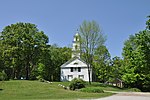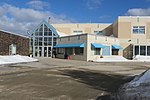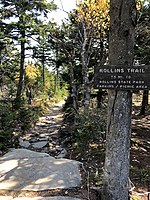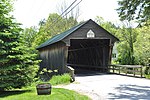Lane River
New Hampshire river stubsRivers of Merrimack County, New HampshireRivers of New HampshireTributaries of the Merrimack River

The Lane River is an 8.5-mile-long (13.7 km) stream in central New Hampshire in the United States. It is a tributary of the Warner River, part of the Contoocook River (and ultimately Merrimack River) watershed. The Lane River begins at the outlet of Kezar Lake in the village of North Sutton. The river flows south through a broad wetland, incorporating the outflow of Gile Pond, then suddenly drops 140 feet (43 m) in 0.3 miles (0.5 km) to enter the village of Sutton. The river continues southeast through more wetlands and past the village of South Sutton, then becomes more rapid as it descends to the Warner River at the Sutton/Warner town line.
Excerpt from the Wikipedia article Lane River (License: CC BY-SA 3.0, Authors, Images).Lane River
State Route 103,
Geographical coordinates (GPS) Address Nearby Places Show on map
Geographical coordinates (GPS)
| Latitude | Longitude |
|---|---|
| N 43.288611111111 ° | E -71.888611111111 ° |
Address
State Route 103
State Route 103
03278
New Hampshire, United States
Open on Google Maps








